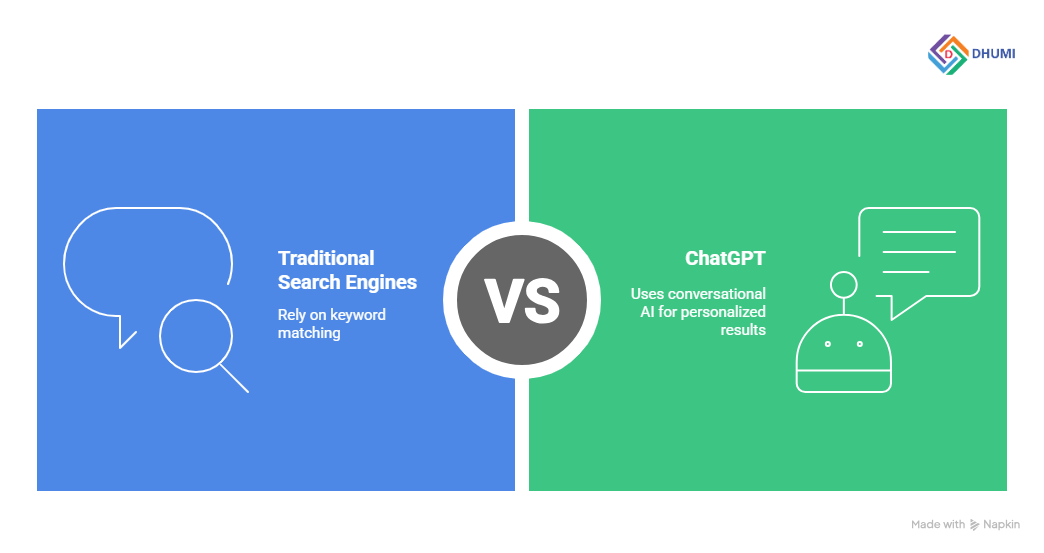In the ever-evolving landscape of online shopping, personalization and efficiency are paramount. Open Ai’s ChatGPT has introduced a new shopping feature that aims to revolutionize the way consumers discover products. By leveraging advanced AI capabilities, ChatGPT offers curated product recommendations tailored to individual preferences. This blog delves into how ChatGPT selects and recommends products, focusing on aspects such as product descriptions, labels, reviews, ratings, pricing, merchant selection, and user feedback.
How ChatGPT Selects Product Results

ChatGPT’s product selection process is rooted in delivering personalized and relevant recommendations. Unlike traditional search engines that rely heavily on keyword matching, ChatGPT utilizes conversational AI to understand user intent and context. This allows for more accurate and tailored product suggestions.
The AI analyzes various factors, including product descriptions, labels, reviews, and ratings, to determine the most suitable products for a user’s query. By considering these elements, ChatGPT ensures that the recommendations align with the user’s needs and preferences.
The Role of Product Descriptions, Labels, Reviews, and Ratings
Product descriptions and labels provide essential information about an item’s features, specifications, and usage. ChatGPT examines these details to understand the product’s core attributes.
Reviews and ratings offer insights into customer satisfaction and product performance. By analyzing user-generated content from platforms like Reddit and editorial sources, ChatGPT gauges public opinion and identifies products that consistently receive positive feedback. This holistic approach ensures that recommendations are not only based on product specifications but also on real-world user experiences.
Read More about Dhumi
Pricing Considerations
Price is a critical factor in the purchasing decision. ChatGPT incorporates pricing information into its recommendations, ensuring that suggested products align with the user’s budget constraints. By accessing up-to-date pricing data from various retailers, the AI can present options that offer the best value for money.
Moreover, ChatGPT’s focus on organic results means that recommendations are not influenced by paid placements, allowing for unbiased product suggestions. This transparency helps users make informed decisions based on both quality and affordability.
Merchant Selection Process
Selecting the right merchant is as important as choosing the right product. ChatGPT evaluates merchants based on factors such as reliability, customer service, return policies, and shipping options. By analyzing data from various sources, including customer reviews and ratings, the AI identifies reputable sellers that offer a seamless shopping experience.
This vetting process ensures that users are directed to trustworthy retailers, reducing the risk of negative post-purchase experiences. Additionally, by highlighting merchants with competitive pricing and favorable terms, ChatGPT enhances the overall value proposition for the consumer.
Read More about How to create Website using AI
Providing Feedback to Improve Recommendations
User feedback plays a pivotal role in refining ChatGPT’s recommendation engine. By sharing their experiences, preferences, and satisfaction levels, users contribute to the continuous improvement of the AI’s accuracy and relevance.
OpenAI encourages users to provide feedback on product suggestions, enabling the system to learn and adapt over time. This iterative process ensures that ChatGPT remains responsive to evolving consumer needs and market trends.
Conclusion
ChatGPT’s integration of shopping capabilities marks a significant advancement in personalized e-commerce experiences. By analyzing product descriptions, labels, reviews, ratings, pricing, and merchant reliability, the AI delivers tailored recommendations that align with individual user preferences.
The emphasis on organic results and user feedback further enhances the trustworthiness and relevance of the suggestions, intricacies of product selection and recommendation, and consumers can leverage these technologies to make more informed purchasing decisions.



